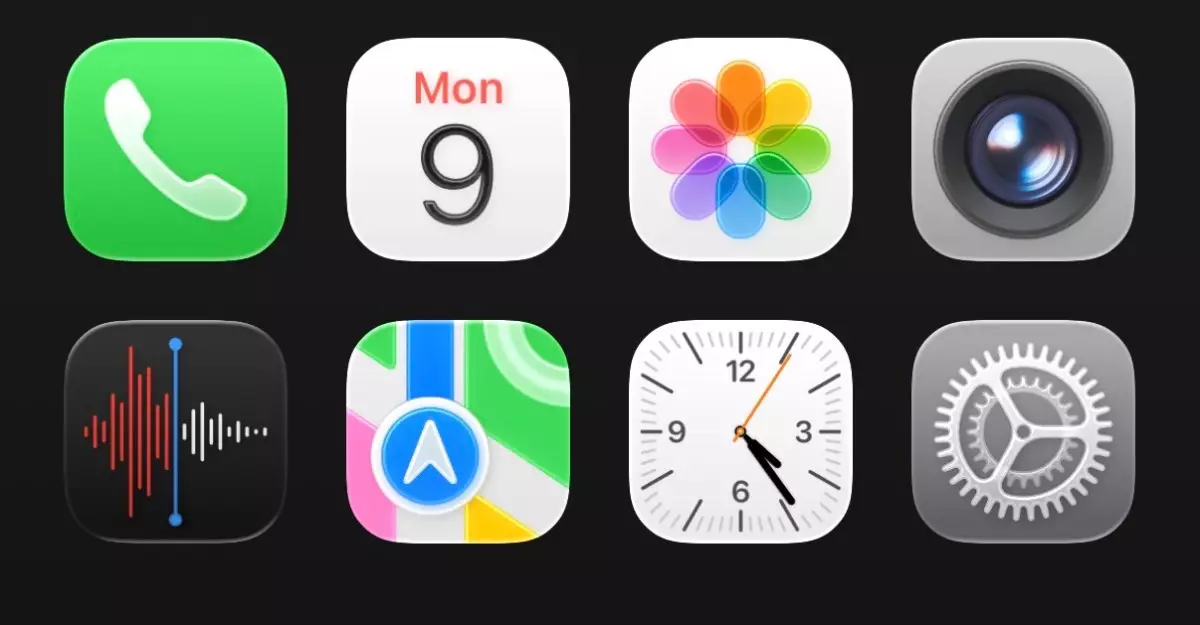The recent unveiling of Apple’s Liquid Glass design language marks a pivotal moment in the evolution of iOS interfaces. Introduced during the WWDC 2025 keynote, this fresh aesthetic aims to blend digital elements with a sense of fluidity and transparency, giving the entire operating system a touch of modernity that is both alluring and disorienting. For a tech giant that prides itself on its design ethos, this experimentation with translucency and glossiness feels like a leap into uncharted territory—a gamble that may either pay off or lead to widespread user confusion.
For years, Apple has cultivated an image of sleek minimalism, where every element retains a purpose-driven design. In this context, the introduction of Liquid Glass is both exciting and risky. While the intention of making app icons and interface elements “float” over the background visual layers adds a captivating, immersive aspect, the early implementation seems uneven. The visuals, while striking, border on overwhelming, particularly when interacting with the cluttered Control Center or those dynamic app icons that feel almost overly playful in their newfound buoyancy.
First Impressions: A Jarring Shift
Transitioning into iOS 26, the stark contrast between familiar elements from previous versions and the new liquid-glass aesthetic can be quite jarring. Imagine the shift from a grounded, flat design to one that embraces reflections and transparency—a shift likened to stepping into a vibrant, futuristic gallery after years of traditional architecture. The graphics are eye-catching, yet they evoke a sense of disorientation rather than a seamless user experience.
An exploratory glance at the revamped lock screen—now a transparent canvas adorned with app icons that float, shiny and almost gummy—reveals the audacity of Apple’s design choices. It is here that one can appreciate the ambitious nature of this endeavor. The graphics appear to breathe and adjust with the background, but the initial viewing experience becomes muddled and confusing, especially for those accustomed to direct visual elements that do not compete for attention.
Functional Artistry vs. User Experience
As I immerse further into iOS 26, there is no denying that the Liquid Glass design carries its charm. The alluring animations, such as the water droplet effect moving across the tab bar, demonstrate a level of creativity that Apple has long been known for. Yet, one must ponder the trade-off between aesthetics and functionality. The Control Center, a hub for crucial controls, appears less navigable in its current translucent form, demanding an immediate redesign to enhance readability. The underlying message of design—that beauty should not overshadow usability—echoes loudly here.
Furthermore, the new keyboard showcases potential, yet raises questions. While the intention to modernize is commendable, the application of spacing could benefit from refinement. A concern that has swiftly emerged from beta testing is that some settings within different apps, including the Messages app, find themselves spaced awkwardly. Such discrepancies can hinder the fluidity that the Liquid Glass design aims to celebrate.
A Growing Affinity
Interestingly, as I spend additional time with iOS 26, my initial aversion begins to fade. There is an undeniable allure to the whimsical nature of the design language. The combination of bold choices, intricate animations, and unique aspects introduces an excitement that was perhaps lacking in previous iterations. Users often find themselves acclimating to significant UI changes with patience, and it appears this might be the case for many with Liquid Glass.
It’s essential to recognize the potential of these changes. As developers continue working on refining the interface—enhancing opacity where necessary and adjusting spacing across apps—the friction will likely subside. The aim of achieving both beauty and function isn’t just a craft; it’s a balance that Apple has always strived for. Liquid Glass could evolve into an innovative hallmark of iOS, captivating users in ways both functional and aesthetic.
In this stage of transformation, what needs to happen is a convergence of user feedback and design iteration. Apple has a habit of tuning their innovations before launching them to the masses. If Liquid Glass can mature from this initial vision into a fully fleshed-out experience, it could redefine how users interact with their devices, ultimately setting a new standard for mobile interfaces in the years to come.

